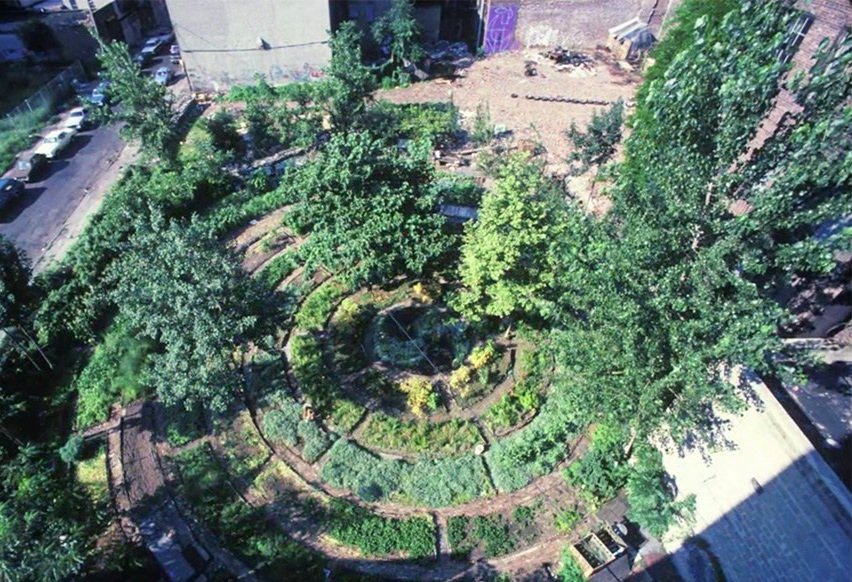
By Bryan Meador
What is Guerrilla Gardening?
To put it simply, it’s gardening without permission. But what’s so bad about claiming a space and making it better with plants?
From Johnny Appleseed to Ron Finley, people have been making gardens in appropriated spaces for centuries and doing it for a variety of reasons. Let’s take a deeper look into the roots of this movement and learn how you can start your own guerrilla garden.

Gerrard Winstanley and The Diggers
One of the earliest recorded examples of guerrilla gardening was led by Gerrard Winstanley. On April 1st, 1649, Winstanley lead his followers to a plot of land on St. George’s Hill in Surrey, UK that had been common land but was recently privatized by enclosures. The group dug up the land and planted crops that were to be distributed without charge to anyone who would join them in the work. As you might expect, local land owners didn’t love this, and soon they hired armed men to beat the Diggers and destroy their work. The movement lost momentum and their efforts were abandoned.

Johnny Appleseed
Another early guerrilla gardener was John Chapman, also known as Johnny Appleseed. Born on September 26, 1774, in Leominster, Massachusetts, Johnny Appleseed has reached legendary status as the man who spread apple trees into the American West with abandon during the 1800s, but the truth of his story is more nuanced than it first appears.
Rather than planting apple trees randomly, Chapman would gather seeds from apple cider mills and travel with them to new communities on the western frontier of the young United States. After arriving in a new town, he would select a piece of land just beyond the limits of the community (usually along a river or stream for easy water access) and plant a small nursery. A fence would be built to protect the young nursery from livestock and other dangers and a neighbor would be tasked with care of the seedlings. This process was repeated over and over throughout Pennsylvania, Ohio, Indiana, Illinois, and Ontario. After his death in 1845, his land holdings were passed to his sister. These 1,200 acres were some of the best plots in the western US and all were by that time surrounded by thriving towns.
So while Johnny Appleseed is commonly known as a kind and wild evangelist of apple trees, he was also a savvy land speculator and a prime example of the Manifest Destiny approach to land thievery.

The Lower East Side’s Garden of Eden
During the 1970s, New York City’s Lower East Side was a hard place to live. Many of the buildings were in disrepair and others had been burned to the ground - some under suspicious circumstances. This downtrodden urban landscape is not where you would expect to find a garden, but in 1975 an artist named Adam Purple changed that.
By using bricks he salvaged from the abandoned lots in the area and creating topsoil with potash from burned wood and manure which he hauled from Central Park, Purple started one of the earliest examples of modern guerrilla gardening in the United States.
This garden grew as more buildings around the original lot were demolished, but after 10 years, Purple’s luck ran out and the city razed the lot to construct low-income housing.
It should be noted that Adam Purple was not the wholesome character that one might expect. You can learn more about this project, and find links that outline Purple’s allegations by clicking here.

Ron Finley
In 2010, Ron Finley transformed the small strip of soil between the curb and the sidewalk in his South Central Los Angeles neighborhood into a garden by planting a few vegetables in this otherwise neglected space. The City of Los Angeles soon cited him for this action, stating that gardening without a permit was an illegal act.

Rather than accepting this and moving on, Ron started a petition demanding the right to garden and grow food in his neighborhood. He was joined by other green activists and eventually won this fight. He has been on the front lines of the urban gardening or guerrilla gardening movement ever since.
Now Ron is on a mission to fight against the food deserts that he grew up in. His memories of driving 45 minutes for fresh produce showed him firsthand how unhealthy and exhausting living in a food prison can be. His vision is ‘to rejuvenate communities around the world through gardening, knowledge, and togetherness’. You can learn more about this project by clicking here.

So How Do I Start?
Nothing could be easier… The following list was created by WebEcoist and the original post can be found by clicking here.
- Take stock of neglected patches of land in your area. They might be vacant lots, sidewalk parkways, medians, highway shoulders, or public parks. Possibilities to beautify these spaces are practically endless – all it takes is some DIY spirit.
- Pick a space to start with and plan what you’d like to do with it, when, how and with whom. You’ll need to decide on a budget, to make sure you don’t end up biting off more than you can chew. Gardening, when not planned carefully, can get expensive. Pick an area close to home, and stay small to start. You can find other guerilla gardeners in your area at the forums on GuerillaGardening.org, or bring some friends.
- Find a cheap source of plants. One of the best is your own backyard if you’ve got one, or other gardeners in the area. A great place to check for free unwanted plants is Freecycle.org, where gardeners often offer up plants when they’re making changes to their own green space. You can also make friends with a worker at a nursery, who can get you plants that look less than perfect for a bargain. Even cheaper is to plant seeds rather than plants, which will bloom into beauty over time rather than providing instant gratification but need more care in the interim.
- Choose your plants wisely. Native plants appropriate for the natural conditions of the area are best, since they won’t need a whole lot of water or special soil. Plus, you’ll avoid accidentally introducing invasive species into the ecosystem. GuerillaGardening.org recommends choosing hardy plants that can stand up to careless trampling by pedestrians as well as plants that make a big impact with color or texture. Evergreen shrubs, herbs and bulbs are great choices.
- Gather up some tools. You don’t need an arsenal of expensive equipment – at the least, though, you should have a trowel and some gloves. A large spoon can sub for a trowel when necessary. If you’re a gardening newbie, you might want to pick up a book or read a gardening primer online.
- Plan to get muddy – and to run if necessary. Wear pants that you don’t mind getting stained, since you’ll be kneeling in dirt and splashing a bit of mud around when you water everything. It’s also a good idea to cover your shoes in plastic bags to protect them (and take the bags off if you have to make a quick getaway) or Wellington shoes, which protect your feet and don’t look like obvious gardening gear. Dark clothing is best.
- Bring some kind of easy-to-carry container to haul off waste like nursery pots and weeds. A plastic storage tub, 5 gallon bucket or large reusable sack will make it easy to haul it all off to a dumpster and/or compost bin when you’re done.
- Carry out your ‘attack’ at a time when you won’t be bothered, and make sure you have adequate transportation. Nighttime is generally best. If you don’t have a car, a bicycle will work for small jobs if you can strap all of your plants and supplies to your back.
- Plan to water everything. If there isn’t a source of fresh water nearby, you’ll need to occasionally bring some in watering cans or other containers to keep the plants happy. Some ambitious guerilla gardeners even keep barrels full of water in the backseats of their cars, with a spigot and hose connected at the bottom.
- Check on your efforts regularly. Add compost when necessary, and pull weeds. Don’t let all of your efforts go to waste from neglect, or your guerilla gardens will turn back into ugly spots in desperate need of care.
- Seed bomb desolate areas if you can’t easily get to them. Seed bombs are simply balls of compost, clay and seeds that you can throw over fences or into other hard-to-reach areas for beauty in unexpected places.
- Spread the word about guerilla gardening in your area. Talk to other gardening enthusiasts about your work, put posters around the area where you’ve gardened, and network with others online.
